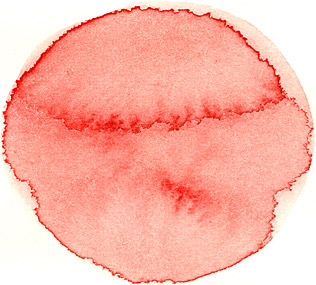Geometry: Introducing Circles
Using an element of
mystery and discovery, a good large group activity to introduce a basic
concept. The variations are good small group fallow-up activities that can be
adapted to the needs of your group.
Objectives
Children ages 4 and up can find similar shape (to that shown) in
the environment. Cog. IIID
Children ages 3-4 can when shown two objects, tells how they are the same or
not the same. Cog. IIIA
Children ages 2 ½-3 can use negative statement, "circle" and
"not circle". Lang. IIIA
Children ages 2-3 can match identical objects Cog. IIIA
and ages 1-1 ½ years can approximate the word "circle" and points to
it. Lang. IA
Materials
Flannel board; box of
felt circles (same size) and assortment of other shapes; treasure box with felt
circle inside; yarn.
Procedures
1. Hide treasure box with felt circle inside. Can the children
find it and guess what's inside?
2. Open the box and place circle on flannel board, identifying the shape as a
circle.
3. Place piece of yarn around circle on board. Remove felt circle. Identify
yarn shape as a circle and as a curved line whose ends meet.
4. Replacing felt circle on board, show box full of felt circles and other
shapes. Children take turns closing eyes, choosing a shape and placing it next
to circle on board. Do the shapes match? Circles are left on the board and
other shapes are taken off. Continue until each child has a turn and/or each
shape in the box has been identified as a "circle" or "not a
circle".
5. Can the children think of some circles they see every day? (plates, DVDs,
wheels, pizza, signs, etc.) Have them look around the room for circles and when
they spot one, raise a hand. To the tune of "Did you ever see a
Lassie?" you might sing "Did you ever see a circle, a circle, a
circle? If you see a circle…show us one now!"
NOTE: "Circle" is a difficult word for young children to pronounce.
Accept any close approximation.  Variations
1. Paste circle on top of poster paper. Have children hunt through magazines and catalogues for objects incorporating circles. Children cut and paste on circle display.
2. Drawing: Pass out large piece of paper with predrawn circles. Children may work separately or in groups to make pictures using these shapes.
3. Fine Motor: Paper chains. Children paste pre-cut strips of colored paper to make chains. Discuss straight and curved lines. Paper chains make good party decorations (black and orange -- Hallowe'en; red -- Valentines Day; etc.)
4. Play any game in which children themselves form a circle.
5. Adapt this lesson plan for use with other shapes.
|